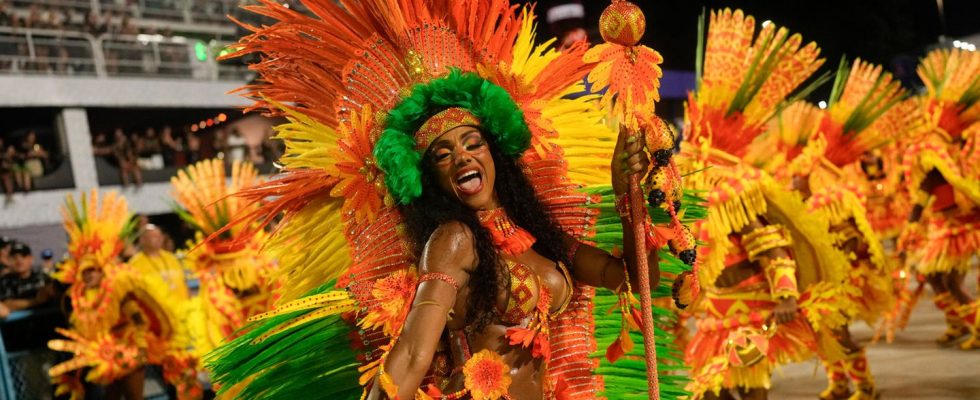Hot rhythms, thousands of costumed people and loud samba sounds: the world-famous parades in the Sambodrome began in Rio de Janeiro on Friday. The “União do Parque Acari” school started on Friday evening (local time). During her parade in a starry night, she told the story of “Ilê Aiyê – 50 years of struggle and resistance”. Brazil’s first Afro-bloc is a symbol of black culture and resistance to discrimination against the black Brazilian population.
Seven other samba schools that qualified for the promotion class of the parade performed until the early hours of Saturday morning, taking spectators into another world with their magnificent floats. The carnival also thrilled the crowds in other Brazilian cities such as Recife, Salvador and São Paulo.
The top twelve schools performed on Sunday and Monday. Tens of thousands in the stands and millions watching television in Brazil and around the world usually watch parades on the oversized catwalk designed by famed Brazilian architect Oscar Niemeyer in 1984. This year Tribünenstrasse is celebrating its 40th anniversary.
Political messages in carnival parades are not unusual
The samba school “Acadêmicos do Salgueiro” called for a stop to illegal mining in the Amazon region during a performance. On Monday night, the carnival dancers performed together with members of the indigenous Yanomami people. The dancers’ faces were painted red in the traditional way, and the words “Miners out” could be read on the drummers’ drums. With almost ten million hectares, the Yanomami territory is one of the largest protected areas for indigenous communities in Brazil. The people there are faced with problems such as malnutrition and malaria, and intruders such as unauthorized gold diggers are also a danger.
Rio’s mayor Eduardo Paes officially kicked off the colorful hustle and bustle at Sugarloaf on Thursday by handing over the city keys to “King Momo”, the symbolic figure of the carnival. This process was even recorded in a decree published in a special edition of the Official Gazette.
Seven million people visit Rio de Janeiro
The Rio Carnival is the largest party in the world, with the city administration expecting a total of seven million people in the city. It is estimated that the carnival will generate an economic turnover of five billion reais (about 934 million euros) – with services directly or indirectly linked to the celebrations. Hotels would operate at 85 percent occupancy during the festive period, it said. The weekend before, the “Cariocas”, as the residents of Rio are called, and tourists got in the mood for the carnival with musicians and dancers in the streets of various parts of the city. It’s currently midsummer in the southern hemisphere – the thermometer at Sugarloaf Mountain showed over 30 degrees on Friday.
At the street carnival in the coming days, dozens of carnival groups – the so-called blocos – will parade through the streets of the districts to create atmosphere. The “Blocos” have always formed something of a parallel carnival to the strictly regulated parades in the Sambodrome, in which a jury awards marks like figure skating. The city administration approved 453 moves this season. “Rio de Janeiro uses Carnival to show the world the best that the city has to offer,” said Ronnie Costa, president of the Riotur tourism agency, which is responsible for organizing the carnival.
According to the city administration, this year’s carnival is the largest carnival investment in the history of the state with 62.5 million reais (around 11.6 million euros). The carnival artists spent a total of 960 hours preparing over the course of the year. Planning begins more than four months in advance “to ensure the festival is brilliant,” Costa said.

